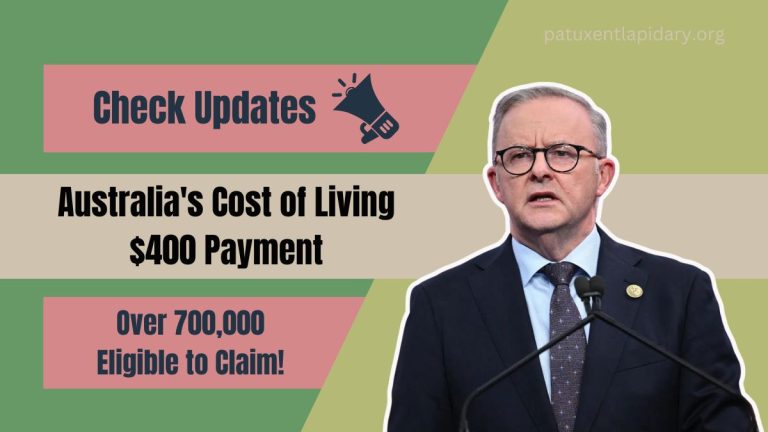A $260 cost-of-living rebate is available for nearly one million Australians, offering significant financial relief. However, many individuals are missing out on this payment due to outdated bank account information.
By updating your Medicare bank details, you can ensure that the rebate reaches you without delay. This simple update can help you receive the support you’re entitled to, especially as inflation continues to strain household budgets.
Key Details at a Glance
| Key Information | Details |
|---|---|
| Rebate Amount | Average $260 Medicare rebate |
| Cause of Delay | Outdated or missing bank details in Medicare records |
| Eligibility | Approximately 930,000 Australians eligible |
| How to Claim | Update bank details via myGov, Medicare app, phone, or service center |
| Source | Medicare Official Website |
What Is the $260 Cost-of-Living Boost?
The $260 cost-of-living rebate is a payment from Medicare designed to provide financial relief to Australians facing high costs. This rebate, which reflects refunds for past out-of-pocket medical expenses, has remained unclaimed for many due to outdated bank account details in Medicare’s records.
Around 930,000 Australians are eligible for the rebate but have yet to receive it because their bank details are not up-to-date. This initiative is part of the broader cost-of-living relief efforts, aimed at helping people manage the rising costs of everyday goods, housing, and services.
Who Is Eligible for the Refund?
Many Australians qualify for this rebate without realizing it. Eligibility is based on past out-of-pocket expenses incurred for Medicare-covered services that were never refunded due to missing bank information. The average amount of the rebate is around $260, though it can vary depending on individual claims.
Common Reasons for Eligibility
- Outdated Bank Information: Individuals who didn’t update their bank details after switching accounts.
- First-Time Claimants: Those who are claiming Medicare for the first time and haven’t linked their bank account.
- Unlinked Bank Accounts: Cases where bank details have not been linked to Medicare after changing financial institutions.
Even individuals who rarely check their Medicare profile may be unaware of unclaimed refunds, which highlights the importance of keeping bank details current to ensure timely receipt of payments.
How to Update Your Bank Details with Medicare
To claim your $260 rebate, you must update your bank details with Medicare. Here’s how to do it:
- Access Your Medicare Account
- Via myGov: Log in to your myGov account and link your Medicare profile.
- Via the Express Plus Medicare App: Available on iOS and Android, this app allows you to update details on the go.
- Phone or In-Person: Call Medicare or visit a local Medicare service center for assistance.
- Navigate to Bank Details
- In myGov: Go to the Medicare section and look for options to update banking information.
- In the Express Plus App: Select ‘Update Details’ to find options for verifying or changing your bank account.
- Update Your Bank Account Information
Enter your current bank details, including BSB and account number, ensuring they match your bank’s records. - Save Changes and Wait for Confirmation
Once updated, save the changes. Medicare will process the update and deposit your rebate directly into your bank account, though it may take a few days or weeks depending on processing times.
Why It’s Important to Update Bank Details
The primary reason for unclaimed rebates is outdated bank information. As individuals change banks or close accounts, these changes often do not get reflected in Medicare’s records, which results in delays or missed payments. Keeping your Medicare account details updated is critical to avoid lost rebates and ensure a smooth process for future payments.
By proactively managing your bank account details, you can help avoid the stress of unclaimed funds and ensure that rebates and essential benefits are received promptly.
Other Cost-of-Living Support for Australians
In addition to the Medicare rebate, there are several other financial support options available to help Australians manage increasing costs. Some of these include:
- Energy Rebates: Many states offer energy bill rebates for eligible households. Check your state’s programs for more details.
- Rental Assistance: Services Australia provides financial support for eligible renters facing housing costs.
- Child Care Subsidies: The Child Care Subsidy can reduce the cost of child care for parents. Explore the eligibility criteria on the official Services Australia website.
These programs, alongside the $260 Medicare rebate, offer vital assistance to Australians navigating inflation and other financial challenges.
FAQs
Q1. How do I know if I’m eligible for this Medicare rebate?
If you have previously incurred out-of-pocket expenses covered by Medicare and haven’t received a rebate, you may be eligible. Logging into your Medicare account is a good way to check for outstanding refunds or notifications.
Q2. Can I claim this rebate if I haven’t used Medicare services recently?
Eligibility for the rebate is based on past services that have been paid out-of-pocket but never refunded. If you haven’t accessed Medicare-covered services recently, it’s unlikely you have an outstanding rebate.
Q3. What happens if I don’t update my bank details?
If your bank details are not updated, Medicare cannot process the rebate, and the funds will remain unclaimed. It’s crucial to update your details to ensure that you receive the rebate.
Q4. Can I update my details on behalf of someone else?
Yes, if you are authorized to act on someone else’s behalf, such as with Power of Attorney, you can update their bank details for them. Contact Medicare for specific instructions.
Q5. Will Medicare notify me about the rebate once I update my details?
Medicare does not automatically send notifications about rebates, so it’s important to periodically check your Medicare account for updates or new notifications related to your rebate.







